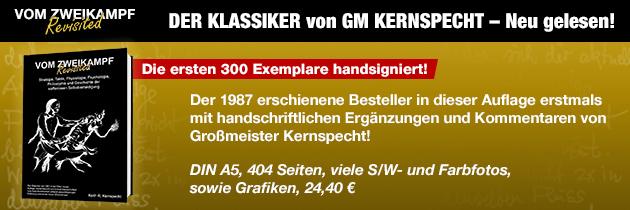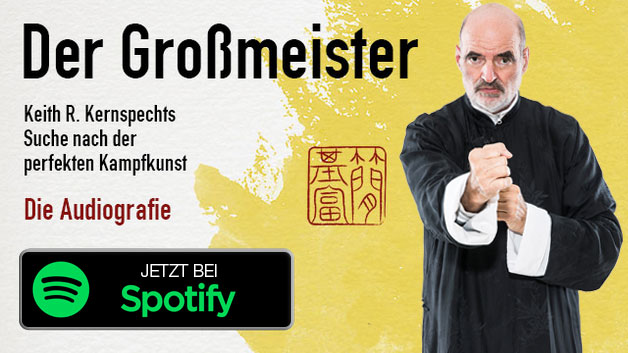Full of skill or stuffed with knowledge?
Dear members, students and colleagues,
I have received a great deal of feedback relating to my last editorials, whose general thrust I shall continue until my goal has been achieved, and I would like to share this with you.
As you may remember, I made the provocative statement that the enormous increase in knowledge within the EWTO has been accompanied by an unfortunate decline in individual fighting ability.
This should surprise nobody who is mindful of my personal, twenty year-old categorical imperative that "Less is more". No advantage comes without disadvantages. That is how it is.
And just as naturally there is an antithesis to this development owing to my counteraction: an over-emphasis on the reaction training which has nowadays been forgotten and is almost unknown.
The fact that the valuable sections will not be neglected is assured by the examination criteria and the wonderful tutorials given by my Si-Fu GGM Leung Ting, who is incidentally in the Castle as I write, and is teaching senior grades to work with the tripodal dummy, the chi-gerk sequence and the next part of the long pole programme.
By the way, his theme for this week is very indicative: "There are no fixed sequences."
Anybody who discovers an unacceptable situation and does not change it, although it lies in his power, is guilty of complicity. This was already known to Bertold Brecht, whose poems I am currently reading to great benefit. Chi-Sao has always been my personal strength, as well as the reflexive responses which are used for self-defence. For the next year, and if necessary for as long as it takes, I intend to dedicate myself to the sorely neglected implantation of "WT reflexes". And with the same aim in mind I will also be conducting TG examinations very conscientiously. While adhering to the preparation time and performing what one has learned by heart is a precondition, it is not enough and not what is essential! Without rapid reactions based on tactile stimuli there is no real WT. WT is implementation of the relaxed, Taoist principle of giving way, and not the performance of choreographed partner forms, however sophisticated they may be.
I do not want to stand idly by while skilled WingTsun students are turned into collectors of lifeless techniques and WingTsun clever-dicks as times change!
The last item on my EWTO examination sheet for TG and Practician grades clearly shows the value I have always attached to the most important aspect of WT, which continues to be examination criterion No. 1 for me:
"General reactions, fighting ability"! That is what I have always primarily looked for in those who present themselves for examination. Since there are only a good half-dozen combat-related, semi-reflexive reactions, I really do "the same with everyone" when checking this examination aspect, which is unique to me in this form in Europe.
At the same time I adapt to the skill level of the candidate, but this also means that I carry around a mental measuring stick to which the reactions of the candidate must measure up, my "Chi-Sao meter", so to speak: if I attack slowly, I expect the candidate to defend no more quickly. Neither should his level of pressure exceed mine.
If he needs to use more speed or strength than I when defending against my "attack", this shows me that he is not following the WT principles and has room for improvement.
Even if he is able to withstand an attack by using all his strength and speed, this does not give him a good mark, as his resistance and the impulses he transmits to me will make him fall victim to my follow-up attack.
Notwithstanding my clear preference for "living" Chi-Sao, I by no means intend to eliminate or replace the necessary (for other reasons) and well-proven sections (two-man Chi-Sao forms). And certainly not with so-called "free Chi-Sao".
Indeed, I do not really teach free Chi-Sao. I proceed according to a clear plan and a defined programme when I "implant" the fundamental WT reactions. As a "reflex implanter", I have to think carefully so that I can make my students able to dispense with thinking during actual combat. I am not very enamoured of "free Chi-Sao" or the way it is practiced, as it leads to unsystematic and incomplete learning. The student is only prepared for the few attacks which are the speciality of the respective Si-Fu. Only a scientifically based and systematic teaching concept prepares the student for all possible situations. You can read all this in GGM Leung Ting’s book "WingTsun Kuen", the first exhaustive work about the martial art of his
Si-Fu Yip Man. It remains the best WingTsun book in the market; it is definitive and indispensable!
Specific reaction training will give you back your superiority in terms of skill, not knowledge! That is my wish and my foremost objective!
Your
Sifu Keith R. Kernspecht
Now to the feedback I have received:
Victor Gutierrez, 6th PG:
The empire is now striking back
I am always annoyed when students repeatedly ask me about some high-flown technique, minor variation or other that they have seen somebody else perform on the internet.
After the recent, turbulent years during which former students and colleagues who overestimate themselves have left us, I have had a nagging feeling that our EWTO is in danger of falling into a dangerous "section trap".
In the search for possible answers, I travelled to Germany and Italy to find out about the latest state of knowledge and any new, possibly more sophisticated Chi-Sao sections from my Si-Fu.
I found that many Technicians who train locally felt the same uncertainty and frustration as I. These constant, senseless changes to the sections and hairsplitting details were only confusing them more. All of them, me included, were waiting for a pronouncement by the only person who could put an end to this unrealistic nonsense. But at that time it looked as if Si-Fu was merely standing by and watching this ill unfolding, but without intervening.
Each day I grew more angry at people who had once been our colleagues, who were simply dreaming up new movements to distinguish themselves from us, indulge their personal vanity and confuse our students with a view to poaching them from us.
Is it not true that all those who have spread WT around the world – including myself – were once students of the same Si-Fu? Suddenly the masters who had spread WT all over the globe in the name of our organisation were called into question, and some who had previously referred respectfully to him as "Si-Fu" began to call him "Mr Kernspecht", now that they were at a safe distance from his arms.
I felt rather isolated, and began to think back to my beginnings when our common Si-Fu always said that WT does not consist of individual sequences of "lifeless" techniques, but is an ingenious concept where sensitivity and adaptability are superior to detailed knowledge. Si-Fu had awarded me the grade of master, therefore I wanted to be worthy of it and began to write articles in the "Martial Arts International" magazine of my friend Alfredo Tucci about all the ideas and interpretations surrounding the basic principles which occurred to me as I remembered my Si-Fu’s teaching.
In doing this I hoped to shake up the students and us teachers, lead them back to the well-proven, old EWTO way and free them from the lethargy and the vicious circle of inventing their own variations to even more "lifeless" techniques, escaping from the insidious trap that tells us "More is more".
I know that many of my colleagues thought I was claiming to have discovered something new when I wrote about "re-evolution". However, I know I owe everything to Si-Fu, and that one cannot invent something new in WingTsun. One can only interpret the enduring concept of WT afresh or differently, depending on the level of one’s understanding – or lack of it.
When Si-Fu finally came on a visit to Barcelona and "played" with each of my Technician students in Chi-Sao and Lat-Sao, then answered every question very easily and convincingly in physical terms as well, my old enthusiasm returned. Shortly afterwards I travelled to see him in Kiel, where I had two days of Chi-Sao tuition: the experience was more than convincing!
To my amazement I found that Si-Fu took more or less the same view of the overall situation. And best of all, his super-soft Chi-Sao is 100% based on the above principles. It was highly enjoyable to learn from my old Si-Fu (and I do not mean his age), who is in top physical shape and produces the most unbelievably motivated, enthusiastic, pure and technique-free WingTsun that I can only dream of achieving. With great feeling, charismatically, grandmasterly and yet completely without condescension, he trained with me for three hours each day as the sun shone on his balcony. There were no fixed movement sequences, the movements came of their own accord, or rather through my impulses when I made efforts to counter his flowing attacks and got into even more difficulty ...
WT to perfection, and Chi-Sao not as a playful final goal, but at last as preparation for real combat.
This is precisely my dream, and I wish to participate in this exciting development as a student, as an EWTO-Meister, as a national instructor and as an ambassador and representative of the EWTO!
I hope the EWTO’s university study course and its Bulgarian professors will conduct their external WingTsun and sports programme in Tenerife in January 2007, so that I can show my colleagues the beauty of this Canary Island and train with them and my Si-Fu.
To the future, and a strong, united EWTO!
Victor Gutierrez
6th Master Level WingTsun
National Instructor for Spain and Portugal
Those who wish to take part in the debate abut Chi-Sao can send their comments to the WT-World editorial office by e-Mail (wt.welt@ewto.com). Contributions will be published on the WT-World online site.
Contributions:
- Editorial: Full of skill or stuffed with knowledge?
- Full of skill or stuffed with knowledge? – Sifu Bodo Seibold
- Full of skill or stuffed with knowledge? – Markus Senft
- Full of skill or stuffed with knowledge? – Sifu Thorsten de Vries
- Full of skill or stuffed with knowledge? – Sifu Stephan Bollen
- Full of skill or stuffed with knowledge? – Sifu Kasper Lund Nielsen
- Full of skill or stuffed with knowledge? – Sifu Michael König
- Full of skill or stuffed with knowledge? – Sifu Andreas Tomczak
- Full of skill or stuffed with knowledge? – Dai-Sifu Oliver König
- Full of skill or stuffed with knowledge? – Sifu Jörg Kilian
- Full of skill or stuffed with knowledge? – Christoph Brük
- Full of skill or stuffed with knowledge? – Pavan




